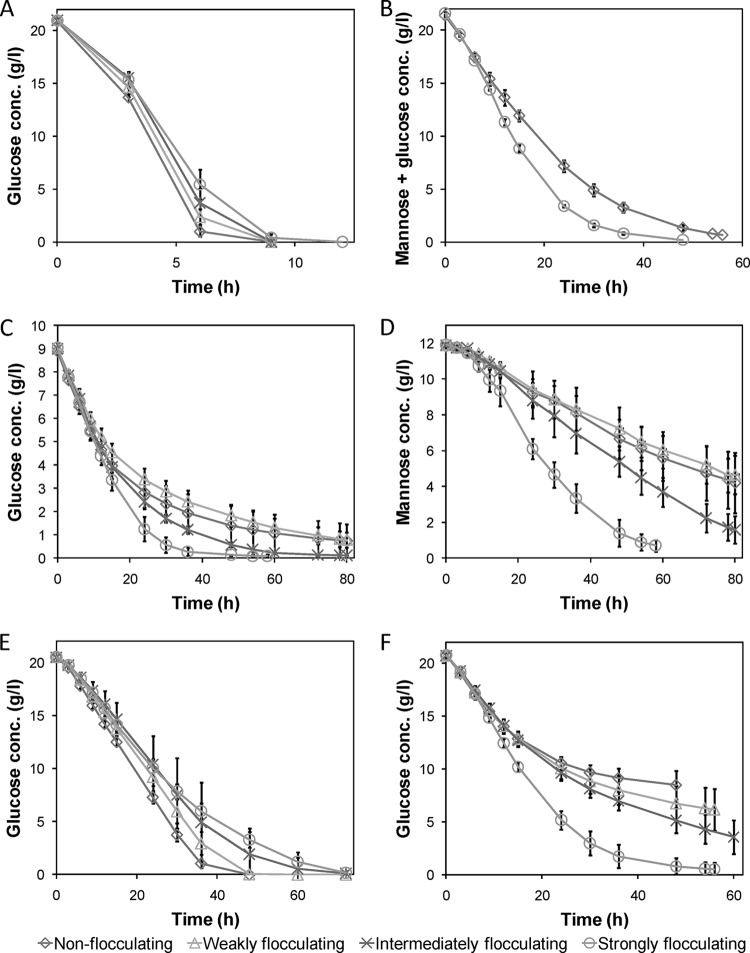FIG 5.
The fermentation profiles of the flocculating strains in different media revealed distinct differences in inhibitor tolerance. The fermentation profiles of the different strains were distinctly different in the different media tested: defined noninhibitory medium (A), spruce hydrolysate (B), glucose (C), and mannose (D) in spruce hydrolysate with 1.5 g/liter extra furfural, defined medium with 200 mM (each) formic, acetic, and levulinic acid (E), and defined medium with 5 g/liter furfural (F). With strong flocculation creating dense cell flocs, the tolerance toward the readily convertible inhibitor furfural, as well as the spruce hydrolysate, was increased, leading to faster fermentations. For the not readily convertible acids, as well as the noninhibitory medium, mass transfer limitations through the flocs plausibly decreased the fermentation rates, leading to longer fermentation times the stronger the flocculation. Average values of three to four experimental replicates (duplicates for panel B) are shown with ±1 standard deviation.

